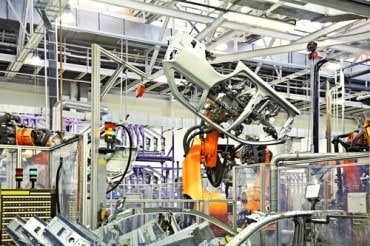
How an industrial IoT solution from Microsoft Azure allowed predictive maintenance and supply chain insights for the oil and gas industry.
Name of Organization: Rockwell Automation
Industry: Energy
Location: Milwaukee, WI USA
Business Opportunity or Challenge:
Oil and gas is one of the most capital-intensive industries in an industrial economy. Replacing an oil pipeline or rig that fails in the field can easily mean millions a day in lost revenue and lost production. It’s always far better to predict and service problems before they become serious, which is why the oil and gas industry as a whole is a ripe field for industrial IoT solutions.
Rockwell Automation, which provides industrial controllers, sensors, and software, was seeking new ways to monitor, in real time, its equipment in an oil and gas supply-chain network, and use the generated data to improve efficiency, drive performance, enable innovation and keep fuel flowing. They sought to build a cloud-based solution for oil and gas companies that would employ software, sensors and devices to predict equipment failures, track performance of equipment in real time, and help refine designs and processes to prevent those failures in the future.
Rockwell was also struggling to scale up its internal infrastructure of data centers to support and analyze Big Data generated as a result of rapid customer growth. That Big Data consisted of information coming from multiple sensors and programmable logic controllers that delivered data measuring temperature, pressure, or vibration of industrial equipment. Adding to this stress was a surge in customer growth, as a single customer can have thousands of the company’s sensors and programmable logic controllers, each delivering up to tens of thousands data points per second.
How This Business Opportunity or Challenge Was Met:
To address its Big Data challenge, Rockwell set out to build a solution that employed the Internet of Things (IoT). Using the power of IoT and the Microsoft Azure platform, Aditi Technologies (part of Harman Connected Services Division) assisted Rockwell Automation in achieving a number of objectives.
The first objective was to keep equipment running. Rockwell installed a series of smart sensors on oil rig equipment that relay data to its command center through a control gateway and then to Microsoft Azure, where it is relayed to decision-makers through digital dashboards. The IoT solution enables real-time insight on equipment performance, predictive analytics, and preventive maintenance. Sensors provide real-time information on the equipment’s performance and health — pressure, temperature, flow rates and multitudes of other variables. This ensures that the engineers have real-time data about the status of the various systems, identify problems and alert the personal in the oil rig at a moment’s notice.
Rockwell’s next objective – ensuring a seamless supply chain — was achieved by modernizing the paper-based equipment and asset transaction process to one that used sensors on equipment with Microsoft Azure. The solution enabled predictive maintenance of equipment and immediate electronic invoicing.
Rockwell also wanted to be able to ensure smart fuel delivery. To accomplish this, the development team connected the company’s fleet of large trucks, which run on liquid natural gas, and connected liquid natural gas pumps across North America to the cloud. “On a basic level, there are reports on the functioning of the equipment, inventory of fuel, consumption rates, and analytics to predict when they’ll need to perform preventive maintenance and replenish supplies,” says Doug Weber, business architect for remote applications at Rockwell Automation.
Building this type of solution comes with data integration challenges. Rockwell needed a single view across all its data – from existing systems, on-premises, cloud, batch processing, and live streaming data. Aditi recommended the Azure Data Factory service, which is designed to interpolate time-series sensor data. The company had already been performing data interpolation on a relatively limited and on-demand basis using relational databases and time-consuming handwritten code. The company also developed and deployed a Hadoop integration solution.
Measurable/Quantifiable and “Soft” Benefits from This Initiative
The IoT solution fro Rockwell Automation reduced troubleshooting time on equipment from days to minutes and saved over $300,000 a day in maintenance costs.
The company has also been able to deliver improved supply-chain efficiency and innovation as well. By modernizing the supply chain system with sensors, the development team helped Rockwell Automation track its oil assets exchange remotely.
Ultimately Rockwell said it is saving its clients millions of dollars through predictive analytics and IoT. The volume of data collected from its hundreds of sensors could facilitate predictive analysis to better anticipate imminent failures and maintenance needs. The data can also be used to improve the design of pumping stations and other equipment based on that long-term perspective.
(Source: Harman International Industries, Inc.)
Want more? Check out our most-read content:
White Paper: How to ‘Future-Proof’ a Streaming Analytics Platform
Research from Gartner: Real-Time Analytics with the Internet of Things
E-Book: How to Move to a Fast Data Architecture
The Value of Bringing Analytics to the Edge
What’s Your Business Intelligence System? How About Your Culture
Video: Rocana Rolls Out 1TB of Free IT Monitoring
Liked this article? Share it with your colleagues!




























